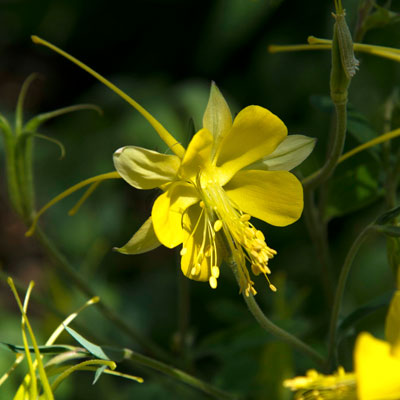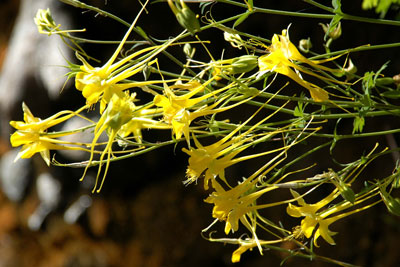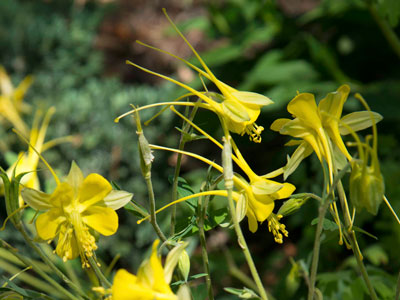Plant of the Week: May 3, 2018

Texas Gold columbine is one of the most pleasing shades of yellow available for the spring garden.
My wife and I have been to see this plant’s mama! It was two days after my 60th birthday. I’d just spoken at Sul Ross University in beautiful Alpine, where my own mom and dad had lived when I was adopted. We took a trip down to Big Bend National Park and hiked up into one of the canyons. There at the base of one of the rare waterfalls were maidenhair ferns, cattails, willows – and glorious golden yellow columbines.

I took this photo of columbines in the Chisos Mountains of Big Bend National Park 14 years ago this week.
It’s from those West Texas columbines that Greg Grant developed and introduced Texas Gold columbines. He and Dr. Jerry Parsons (Extension Service in San Antonio) worked hard to bring it into the market, and if the TAMU websites and my math are correct, this is the Silver Anniversary of its introduction as a Texas SuperStar® plant.
These two guys have done a lot to bring fine Texas plants into the market. Along the way, another friend, Dr. Steve George of TAMU up in Dallas, also was involved, and I still remember Steve dropping demonstration plants off for me to try.

There’s something therapeutic about the graceful spurs of columbines bouncing about in the spring breeze. Photo from McKinney just a few days ago.
What you need to know to succeed…
These are my observations based on a quarter-century of growing this beauty. Your experiences may prove to be slightly different, but they’re almost sure to be good.
• Texas Gold columbine is a short-lived perennial (2-3 years), but it reseeds itself freely.
• It needs rich, consistently moist garden soil.
• Plant it in shade or early morning sun with afternoon shade. Think of what you’d give hostas, ferns, summer phlox, hellebores, ajuga and oxalis and it will do wonderfully right alongside them.
• Its foliage is handsome blue-green, showing up in late fall and early each spring, then gradually dying back a month or two after the plants finish blooming. Spider mites may show up at that time, but they’re really no big problem because the plants go essentially dormant by then anyway.
• Mulch your beds with compost or shredded tree leaves. As seedlings emerge you can easily dig them out and replant them.
That’s all there is to growing this fabulous plant – other than to remember to thank Greg, Jerry and Steve for bringing it to our attention.
